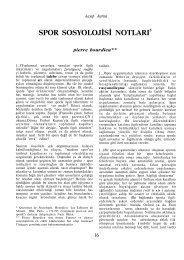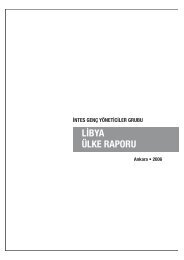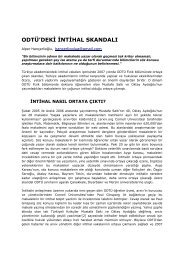Untitled
Untitled
Untitled
Create successful ePaper yourself
Turn your PDF publications into a flip-book with our unique Google optimized e-Paper software.
14 INTRO D UCTI ON<br />
for lack of theoretical rigour, even for a tacit complicity with the status<br />
quo."· From today's viewpoint, Kracauer's sceptical detachment from<br />
speculative constructions of a general historical process appears rather<br />
as a fu rther step in the modernization of his intellectual existence. The<br />
grand recit of the philosophy of history seems to be definitively invalidated.<br />
Moreover, Kracauer's abandonment of grand philosophical<br />
schemes finds its complement in a reflection upon the relation between<br />
sociological knowledge and textual representation that points forward<br />
to present-day debates in cultural theory.<br />
'What does an ethnologist do? - he writes.'55 Clifford Geertz's famous<br />
redefinition of ethnology as ethnography is to some extent anticipated<br />
by Kracauer. His sociological expedition into 'employee culture' is<br />
likewise a sociographical undertaking which tackles anew a question<br />
that Kracauer had already been concerned with in his early epistemological<br />
treatise Soziologie als Wissenschaft. It is the question of the<br />
possibility of a 'material sociology', which mediates between the claim<br />
to concreteness and the claim to valid cognition. For Kracauer, neither<br />
abstract 'idealist thought' and the scientific tradition of 'formal sociology'<br />
nor the literary genre of empirical reportage which 'generally<br />
draws from life with a leaky bucket' ,56 present a satisfactory answer to<br />
this twofold claim. In the preface to his celebrated anthology Der rasende<br />
Reporter (1924), the writer Egon Erwin Kisch had defined the reporter<br />
as a witness without a standpoint, and reportage as a 'photography of<br />
the present' 57 Kracauer seizes on this definition in Die Angestellten and<br />
turns it against the genre: in so far as reportage 'photographs life', the<br />
functional coherence of reality - its artificial, constructed quality -<br />
eludes it. This 'constructedness' demands a representational method<br />
that dissolves the fortuitous empirical coherences of the raw material,<br />
and rearranges and combines the 'observations on the basis of comprehension<br />
of their meaning' Kracauer calls the resulting textual structure<br />
a 'mosaic' Behind this image it is not hard to recognize the technique<br />
of another optical medium, namely the montage technique of film.<br />
Microscopic description on the one hand, construction on the other:<br />
the representational methods that Kracauer seeks to combine are<br />
indeed so near to film close-up and montage that one could argue a<br />
posteriori from them how he visualized a good film.58 What Kracauer<br />
conceived of as the specific materialist possibility of film - the possibility<br />
of analysing and representing reality in the medium of the optical itself,<br />
i.e. purely through focusing and cutting - he seeks in Die Angestellten to<br />
translate into a text. If his earlier essays deciphered surface-level<br />
phenomena as the reflex of a conceptually preformulated 'fundamental






